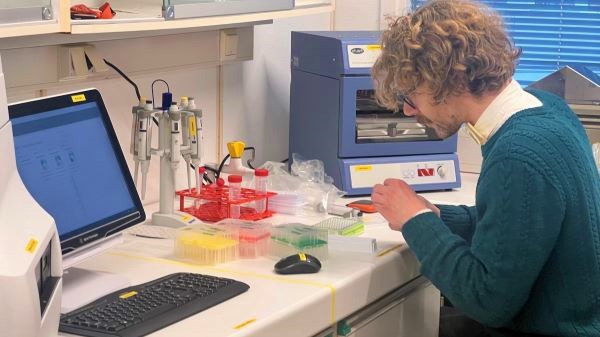This spring Edna Xian Hu, Lab Manager at NCMM, and Rasma Gutsmite, Principal Engineer at NCMM, have been busy preparing Seahorse left by a previous research group, to be released for use as a shared instrument. There are currently two other identical systems in Oslo, but one is in a private company and the other one is in a research lab at OUS, and neither is accessible as a shared instrument. Ahead of the release, Edna and Rasma contacted potential users to scope out the interest and what they found was that there were at least 10 different groups at the UiO/OUS who were interest in using this instrument.
At the moment there are two expert users from Oslo University Hospital who are able to train other users. The two system administrations Edna and Rasma have also been participating in user trainings to gain experience and will soon be able to train new users themselves.
Valuable tool for clinical research
So far a lot of people from the hospital and working with clinical trials have expressed interest in using the machine. People working with molecular biology have been less interested, however there has been a growing trend in the research field with more and more people running these kinds of experiments. Edna comments:
– This instrument is highly valuable for drug screening and clinical research due to its semi-high throughput nature. It allows for automatic experimentation with different conditions in a 96 well cell culture dish over time.
Edna explains that it measures changes in cellular metabolism, determining whether energy is produced via the main pathway, mitochondril pathway or glycolysis pathway. These two pathways are rather specific but also quite general in a sense that every single cell needs to produce energy in some way. Any disorder in this process often indicates changes that could be related to disease status.
– The instrument itself is simple to use and highly precise. It primarily measures the oxygen content in the cultured cell media. It also has a built-in robotic system that allows for the injection of up to 5 different drugs and the scheduling of their exchange. The machine measures the metabolic change of the cells in real-time after adding each drug, and subsequently washes them out before starting another round, Edna continues.
– Despite its small physical size, this machine can perform numerous experiments in a short amount of time. The results are consistently stable and reproducible, provided that the instrument is properly maintained, she adds.
So far two expert users have been test running the machine and are happy with the results.
– They were able to prove their hypothesis and observe a distinct difference between the control and treatment groups, Edna comments. This could already yield two excellent papers.
Attracting new users
While it appears that not many groups are familiar with the system or how to use it, there has been a growing interest from various research institutes.
– As we have the instrument and the consumables readily available, researchers can just bring their cells and start running experiments. This ease of use could be very attractive for researchers to just do a quick test run of a technology that was not previously available. And because this technology is relatively rare but well-validated, it might even boost the impact factor of their publications, Edna highlights.
The material itself for this instrument is quite costly; for one experiment the minimum cost is around 2600kr. However, since we are still in the user training period and getting used to the instrument, we decided to have a promotion period for new users to come in. Edna explains:
– To incentivize use, we will reduce the cost for the first several months until September and not charge anything for the actual use of the instrument. Additionally, we will also provide the training for free.
After September we will start to consider charging for the training and the use of the system, most likely by introducing a charging scheme that would be hourly based. Each session is usually around two hours. We will discuss the pricing structure with existing users and take actual running costs into consideration during this process. However, since NCMM is funded by the University any charge would still be subsidized.
